Exploring Light
By Bryan Peterson–
You can do one of the best exercises I know near your home whether you live in the country or the city, in a house or an apartment. Select any subject, for example, the houses and trees that line your street or the nearby city skyline.
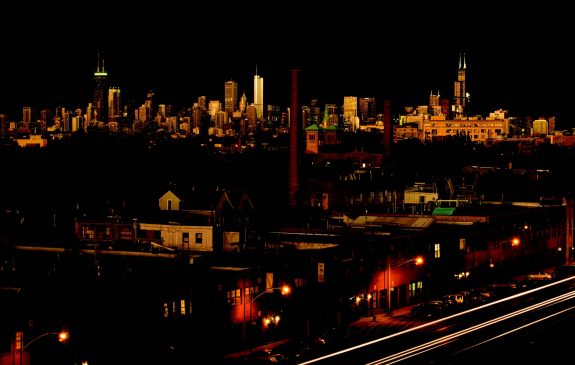
All images: Nikon D800E, Nikkor 70–300mm at 280mm, ISO 200. Exposure: f/16 for 4 sec. © Bryan Peterson
If you live in the country, in the mountains, or at the beach, choose a large and expansive composition. Over the course of the next twelve months, document the changing seasons and the continuously shifting angles of the light throughout the year. Take several pictures a week, shooting to the south, north, east, and west and in early-morning, midday, and late-afternoon light.
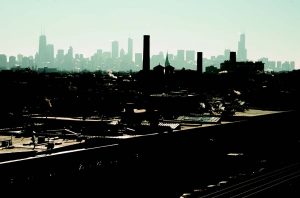
Exposure: f/16 for 1/500 sec. © Bryan Peterson
Since this is an exercise, don’t concern yourself with making a compelling composition. At the end of the twelve months, with your efforts spread out before you, you’ll have amassed knowledge and insight about light that few professional photographers—and even fewer amateurs—possess.
Photographers who use and exploit light are not gifted! They have simply learned about light and have thereby become motivated to put themselves in a position to receive the gifts that the “right” light has to offer.
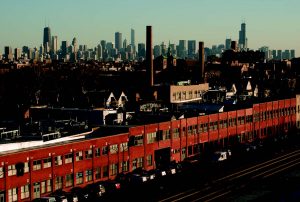
Exposure: f/16 for 1/200 sec. © Bryan Peterson
Another good exercise is to explore the changing light on your next vacation. On just one day, rise before dawn and photograph some subjects for one hour after sunrise. Then head out for an afternoon of shooting, beginning several hours before and lasting twenty minutes after sunset.
Notice how low-angled frontlight provides even illumination, how sidelight creates a three-dimensional effect, and how strong backlight produces silhouettes. After a day or two of this, you will be well on your way to becoming a lighting expert!
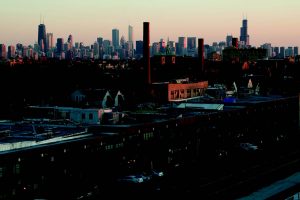
Exposure: f/16 for 1/30 sec. © Bryan Peterson
Returning to my rooftop repeatedly, I am able to make a study of light at all different times of day. You can do this, too, whether you shoot in your front yard or backyard.
This is not about an effective or compelling composition but is a valuable lesson about light; it is not necessary to go anywhere.
After you do this over the course of one day, don’t be surprised if you start paying more attention to the light and eventually even the seasons.
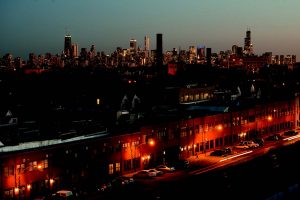
Exposure: f/16 for 4 sec. © Bryan Peterson
From backlight to frontlight to dusk light, as you look at these images, your reaction to each is different.
The light (or absence of light) creates a unique “personality” for each of these exposures.
This is an example of what I said earlier: Each of the photographs shows a cake, but the light is the frosting.
ACKNOWLEDGEMENT
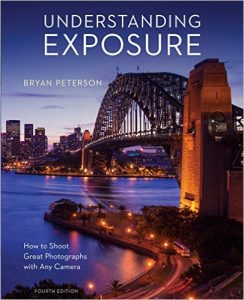 Bryan Peterson is a world-renowned photographer, teacher and writer whose books are among the best ever written about photography.This excerpt from the Fourth Edition of Understanding Exposure, © 2016, has been reprinted by permission of the publisher, Amphoto Books, a division of Penguin Random House, Inc. The book is currently available from Amazon and other booksellers.
Bryan Peterson is a world-renowned photographer, teacher and writer whose books are among the best ever written about photography.This excerpt from the Fourth Edition of Understanding Exposure, © 2016, has been reprinted by permission of the publisher, Amphoto Books, a division of Penguin Random House, Inc. The book is currently available from Amazon and other booksellers.
FOR BRYAN’S 2016 WORKSHOP SCHEDULE Click Here.
Original Publication Date: June 19, 2016
Article Last updated: June 19, 2016
Related Posts and Information
Categories
About Photographers
Announcements
Back to Basics
Books and Videos
Cards and Calendars
Commentary
Contests
Displaying Images
Editing for Print
Events
Favorite Photo Locations
Featured Software
Free Stuff
Handy Hardware
How-To-Do-It
Imaging
Inks and Papers
Marketing Images
Monitors
Odds and Ends
Photo Gear and Services
Photo History
Photography
Printer Reviews
Printing
Printing Project Ideas
Red River Paper
Red River Paper Pro
RRP Products
Scanners and Scanning
Success on Paper
Techniques
Techniques
Tips and Tricks
Webinars
Words from the Web
Workshops and Exhibits
all
Archives
December, 2024
November, 2024
October, 2024
September, 2024
August, 2024
July, 2024
June, 2024
May, 2024
April, 2024
more archive dates
archive article list




